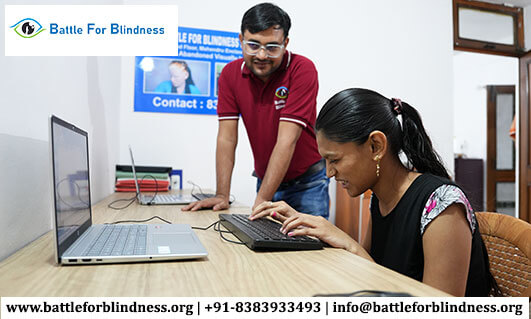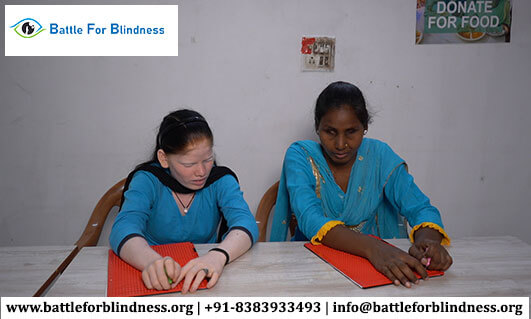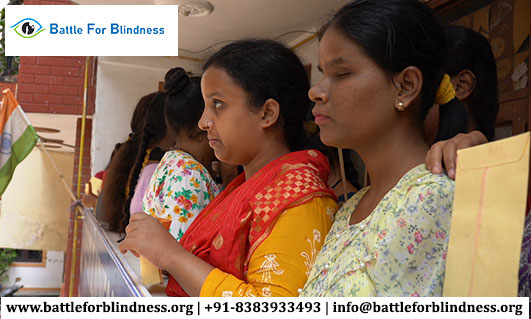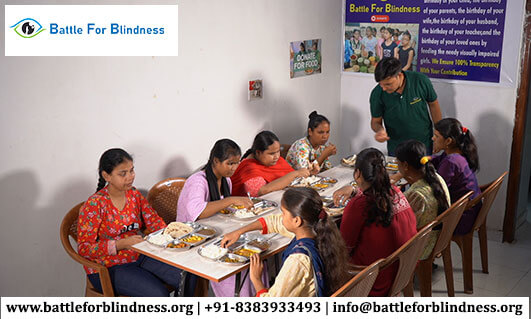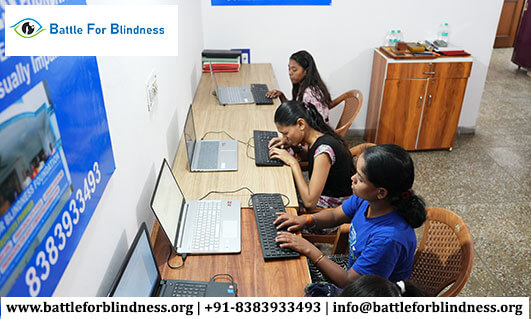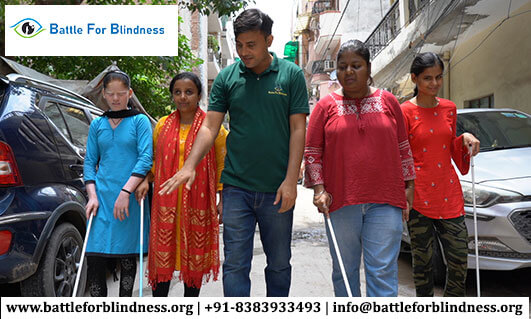
Recreational activities play a vital role in the growth and development of children, offering social, emotional, and physical benefits. For visually impaired girls, crafting inclusive recreational experiences is essential to ensure they have equal opportunities to engage, have fun, and build confidence. Here’s a guide to creating enriching and inclusive recreational activities tailored to visually impaired girls.
1. Adapted Sports Programs
Sports can be an empowering way for visually impaired girls to build strength, teamwork, and self-esteem.
Recommended Activities:
- Goalball: A team sport designed specifically for visually impaired players where participants use a ball with bells inside, helping them track its movement by sound.
- Beep Baseball: An adapted version of baseball using a beeping ball and bases that make noise, allowing players to locate them using auditory cues.
- Tandem Cycling: With a sighted partner as the lead, visually impaired girls can experience the thrill of cycling and enjoy the outdoors.
Tips: Ensure safety measures such as padded surfaces and clear instructions for all participants.
2. Art and Craft Workshops
Creativity knows no bounds, and art is a wonderful way to express emotions and ideas without needing vision.
Activities to Consider:
- Tactile Painting: Use raised-line drawing boards and textured paints to create tactile art that can be felt and explored.
- Clay Modeling: Provide clay, modeling dough, or playdough for hands-on sculpture making, encouraging the girls to create shapes they can feel.
- Scented Crafts: Incorporate scents like lavender, citrus, or cinnamon into art projects for a multi-sensory experience.
Tips: Keep the environment organized with distinct, labeled containers for easy access to materials.
3. Music and Dance Sessions
Music transcends visual barriers and is an excellent recreational activity for visually impaired girls.
Engaging Options:
- Dance Classes: Offer adaptive dance lessons that emphasize rhythm and movement, allowing the girls to follow instructions through verbal cues and feel the music.
- Musical Instrument Play: Provide instruments like drums, tambourines, and keyboards so they can create and explore sound.
- Group Singing: Organize sing-alongs or choral practices that emphasize vocal participation and teamwork.
Tips: Ensure instructors are comfortable giving clear verbal instructions and guiding through touch when necessary.
4. Nature and Outdoor Activities
Connecting with nature provides a refreshing and grounding experience.
Activities to Include:
- Sensory Garden Visits: Plan outings to sensory gardens filled with fragrant plants, textured paths, and fountains that produce gentle water sounds.
- Tactile Nature Walks: Guide the girls through safe trails where they can touch tree bark, leaves, and flowers while listening to the sounds of nature.
- Campfire Storytelling: Host storytelling evenings around a campfire where stories can be shared and enjoyed with the sounds and smells of the outdoors.
Tips: Make sure the outdoor areas are accessible and have paths that are easy to navigate.
5. Interactive Games and Challenges
Games can be adapted to emphasize touch, hearing, and teamwork.
Great Game Ideas:
- Braille Board Games: Games like Monopoly and Scrabble are available in Braille, making them accessible and fun.
- Simon Says with a Twist: Use sound cues and textured props for a fun, engaging take on a classic game.
- Mystery Bags: Fill bags with objects of different textures and have participants guess what’s inside through touch.
Tips: Create a safe, well-lit space and encourage teamwork to foster a sense of community.
6. Workshops on Life Skills
Recreation can blend seamlessly with life skills education, helping visually impaired girls build confidence in their daily routines.
Examples:
- Cooking and Baking Classes: Adapt recipes using large-print or Braille instructions and teach the girls to prepare simple, fun dishes with tactile ingredients.
- Personal Development Sessions: Host workshops that include activities like goal-setting, public speaking practice, or creative writing using adaptive tools.
- Gardening: Introduce gardening where they can plant and care for herbs and flowers that have distinct textures and scents.
Tips: Always provide accessible materials and ensure the presence of guides or facilitators who understand how to support participants.
Essential Considerations for Inclusivity
- Safety First: Always check the space for potential hazards and ensure it’s designed to be navigated comfortably.
- Detailed Instructions: Provide clear, verbal step-by-step explanations for each activity and use demonstrations where possible.
- Accessibility of Tools: Use Braille labels, large-print instructions, and adaptive tools to help make activities more inclusive.
- Personalized Support: Have trained volunteers or instructors who understand how to assist without being intrusive.
Conclusion
Inclusive recreational activities help visually impaired girls explore their interests, build friendships, and grow in confidence. By thoughtfully adapting activities to engage their other senses, you create a world of opportunities that enriches their lives and celebrates their unique strengths.
